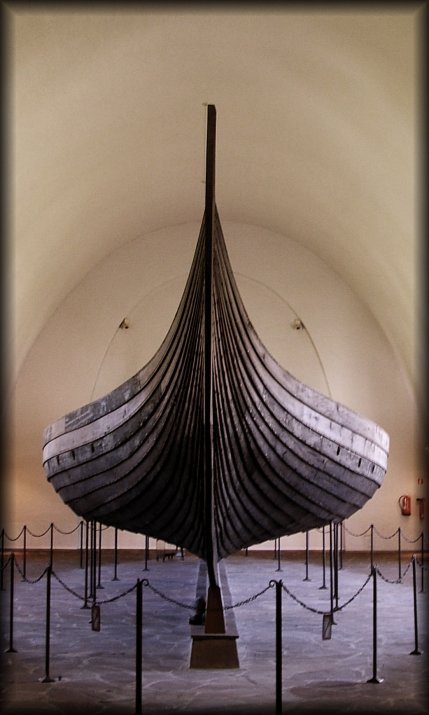
The Gokstad Ship at the Viking Ship Museum. The Gokstad Ship was found in a large burial mound at the Gokstad farm in Sandar, Vestfold in 1880. The ship had been built around 890 A.D. and later used in the ship burial of an important chieftain who died in or around 900 A.D. The ship, built of oak, is 24 meters long , 5 meters wide and is the largest of the three ships in the museum. It could accomodate 32 oarsmen and was much more sturdily built than the Oseberg ship. The keel and mast step are sturdier and the ship's sides are higher, with two strakes above the oar holes. The oar holes could be hatched down when the ship was under sail. Using a square sail of 110 sq. m., the ship could reach speeds of over 12 knots. Just how seaworthy it had been, was demonstrated when a copy of the Gokstad Ship sailed the Atlantic from Bergen to the World's Fair in Chicago in 1893. During the excavations, the skeleton was recovered of a male aged between 50-70 years. The skeleton was found in a bed in a timber-built burial chamber. Although the identity of the person buried is unknown, it has been suggested that it is that of Olaf Geirstad-Alf, a petty king of Vestfold.